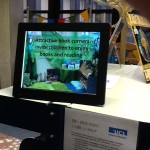Well this is my second attempt at writing this entry. The first one disappeared when the draft failed to get saved on the blog. I did not scream, there was just this gentle moan as I now have to remember everything I said before. It will teach me to do manual saves more frequently and not rely on the automatic ones.
Anyway I had been talking about the types of curation tools that I have come across and the ones that I now use on a regular basis. The one that I seem to use most is Pinterest, possibly because it is very easy, lots of images etc enable you to pin them and it is a great way of putting together images for work and for leisure interests. Mine tend to be for courses I have done, libraries, books I want to read (great to have the visual key) and I think I am going to try recipes as well.
The other tool that I use quite a lot is Diigo, which is a bookmarking tool that allows me to collect together references about the same or related topics; you do this by the tags/keyword you assign to the link. Very quick and simple to use.
I was interested in the two other tools that have been mentioned on Thing 8 and I had not used, so I went and had a go to see how they felt. I have signed up to Flipboard as I think that it has possibilities and helps bring a range of articles to my notice that I might have missed otherwise. I had heard of Storify and I know a couple of colleagues have used it successfully but it is something for the future maybe.
Two other tools that I have on the computer and I am just starting to use are Scoop.it and a little red armchair for a tool called Readability. Scoop.it trawls the internet for articles and references to subjects that I have nominated, but it will also allow me to capture information that I come across from a variety of sources. Readability is something I had almost forgotten about but I have just given it a try and it is great for saving documents to read later and even to send to your Kindle. Somehow reading a report whilst curled up in a chair is better than sitting at a computer. Finally I am going to mention Jing and Screencast.com which shows as a small sun shape at the top of my computer screen. It allows me to capture images, pages or even video and then save it to my computer. It is great for saving pieces of information that you want to read later.
Given the amount of information that we are inundated with it is so useful to have curation tools that are easy to use and help keep a track of information for both professional and personal interests.

